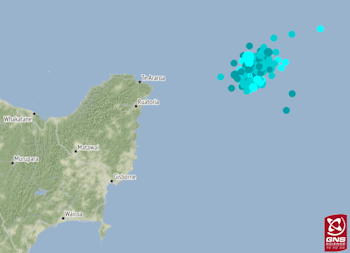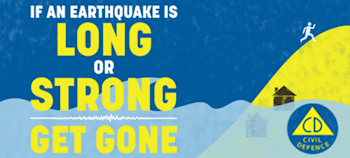
East Cape and Kermadec aftershocks - what's happening?
It’s natural to ask the question about how many aftershocks there have been since the M7.2, but the answer isn’t so simple.
After a large earthquake, such as Friday’s M7.3 East Cape event, we expect further earthquakes in the region, some of which may be widely felt. But after such a dramatic series of earthquakes, counting the number of aftershocks is not an easy task.
GNS Science seismologist Matt Gerstenberger explains:
“We're dealing with events that are happening hundreds of kilometres offshore, far from the GeoNet seismograph network. There are so many earthquakes happening right now – ranging from big earthquakes (M6.1 just after 1pm on Saturday) to small ones – and they are overlapping in time. The distance from the network and the overlapping signals from these earthquakes makes it trickier to identify them from one another.
“We have had three large earthquakes: M7.3 in the East Cape around 2:30 on Friday morning, and two in the Kermadecs, M7.4 and M8.1 several hours later. These are creating two separate sequences of earthquakes, both with the potential to affect the North Island.
“What we can say for sure is that right now, the sequence is behaving as we would expect it to.”
GNS Science experts are already researching these earthquake sequences to understand the relationship between the Kermadec earthquake sequence and the East Cape sequence. They are also looking in more detail at the M7.3 earthquake, which looks like a very complex rupture.
“There are already questions forming about whether this event was a single rupture – or something more complicated,” Dr Gerstenberger says.
GNS Science seismologists have developed three scenarios for what earthquakes may happen over the next 30 days. These are overall scenarios that include both sequences.
In summary, in the aftermath of a large earthquake, we expect to see a lot of earthquakes of varying size – over time, they become fewer and smaller. But there is still an increased probability of a bigger event and we need to stay vigilant. Every earthquake is a good reminder to always be prepared. Protect yourself from the earthquake first and drop cover and hold during shaking. And then, if it's Long or Strong, Get Gone.
Read more about aftershock forecasting following the M7.2 East Cape Earthquake.
In the event of an earthquake, Drop, Cover and Hold during the shaking. Protect yourself from the earthquake first.
As soon as the shaking stops, move immediately to the nearest high ground, out of all tsunami evacuation zones, or as far inland as possible.
NEMA (National Emergency Management Agency) have a great website with information on what to do before, during and after a tsunami. There you can also find tsunami evacuation zone maps for around New Zealand, and what supplies you need in an emergency.
Need to Talk? If you would like support or advice, have feelings of anxiety, stress, prolonged fear, hopelessness or anger, or if you just need to talk with someone. Please text or phone 1737 to speak to a trained councillor in the National Telehealth Service. It's free to call or text.
GNS SCIENCE MEDIA CONTACT: 021 574 541 or media@gns.cri.nz



